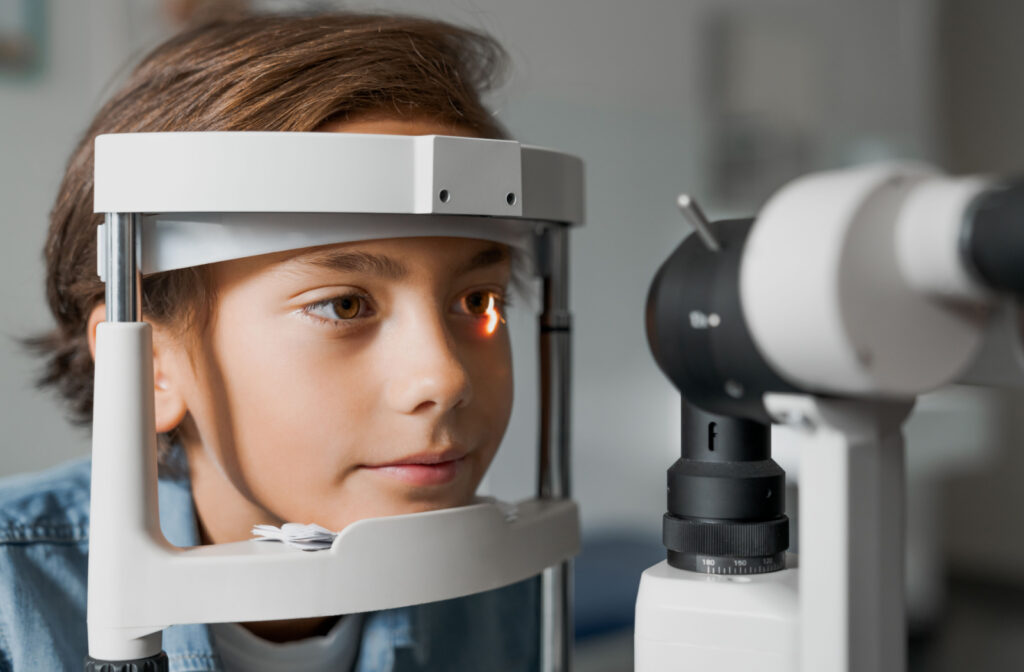Featured
Table of Contents

Normal eye exams are essential for keeping good vision and finding potential eye health and wellness issues early. Nevertheless, the frequency of these exams can vary substantially based upon a person's age, way of living, and general health. Comprehending the advised routine for eye examinations can help make sure that individuals of every ages get suitable care and monitoring for their eye health and wellness.
Infants and Toddlers (0-2 Years)
For babies and kids, eye tests are crucial for detecting any prospective vision troubles early on. The American Academy of Ophthalmology advises that a child's initial eye test must occur at around six months old. During this initial check out, the eye care expert will certainly analyze the youngster's aesthetic development and check for any kind of obvious eye issues.Following this very first test, it is advised that children have an additional eye examination at age three. This visit will certainly focus on analyzing the kid's overall aesthetic feature, consisting of eye alignment and the ability to track objects. If no issues are discovered, the next test must be scheduled prior to the youngster starts school, usually around age five or 6.
School-Aged Kids (6-18 Years)
Once children reach institution age, normal eye examinations should be scheduled every one to 2 years. Vision is essential for finding out and development, and numerous schools perform vision testings. These screenings do not replace a comprehensive eye test by an eye treatment expert.For children entailed in sporting activities or tasks needing considerable visual emphasis, yearly eye exams may be suggested. Additionally, if a child displays signs of vision problems-- such as trouble reviewing, squinting, or frequent frustrations-- a see to the eye doctor must be scheduled asap.
Youthful Adults (19-39 Years)
Youthful grownups usually have fewer vision modifications than older age, however normal eye tests stay important. The basic suggestion is to set up an eye test every two years throughout this duration. However, individuals with certain danger factors-- such as a household history of eye condition, diabetes mellitus, or those who use call lenses-- should think about annual eye tests.Additionally, those who spend significant time on digital gadgets might experience electronic eye pressure. If signs such as dry skin, fatigue, or blurred vision happen, it may be a good idea to see an eye treatment expert sooner.
Adults (40-64 Years)
As people enter middle age, the possibility of establishing vision problems rises. Grownups aged 40 to 64 need to set up eye examinations each to two years. This age team might begin to experience presbyopia, an all-natural age-related condition that makes it challenging to concentrate on close things. Eye exams can also assist find various other common age-related conditions such as glaucoma, cataracts, and macular deterioration.If individuals in this age group have danger factors such as high blood stress or diabetes mellitus, they might call for even more constant examinations to check their eye health and wellness closely.
Seniors (65 Years and Older)
For seniors, normal eye exams end up being even extra crucial. The American Optometric Association advises that people aged 65 and older have an eye exam at least once a year.Verdict.
Understanding the ideal routine for eye exams based on age is crucial for keeping optimal eye health and wellness throughout life. By adhering to these guidelines and seeking advice from with an eye treatment specialist, people can take positive steps toward maintaining their vision and overall health.Table of Contents
Latest Posts
Washington Fencing's Technique to Ensuring Quality and Toughness in Every Fence Job
Published Nov 23, 24
0 min read
How to Spot and Address Common Roofing Issues Before They Escalate
Published Nov 23, 24
1 min read
Replacing Garage Doors: Signs It’s Time for an Upgrade
Published Nov 23, 24
3 min read
More
Latest Posts
Washington Fencing's Technique to Ensuring Quality and Toughness in Every Fence Job
Published Nov 23, 24
0 min read
How to Spot and Address Common Roofing Issues Before They Escalate
Published Nov 23, 24
1 min read
Replacing Garage Doors: Signs It’s Time for an Upgrade
Published Nov 23, 24
3 min read